Along The Road To Accessibility: BU Disability History Exhibition
How Did We Get Here…
The Along the Road To Accessibility exhibition focuses on the positive stories of support for persons with disabilities at Boston University and beyond. This timeline and map highlight the people and places where history was made. Represented here are the short tales of the change makers, supporters, organizations, offices, and clubs that made history from before the University was chartered in 1871 through today. Boston University has been helping people from the very beginning, serving initially as a seminary in Newbury, VT intended to train Methodist ministers that support people from all walks of life, race, creed, and ability. Later this seminary would move to Boston and become the founding school of the University and the heart and soul of why we are such an inclusive community. The inclusive charter created in 1871 was written by faculty members and pastors that were members of the STH community. From this charter, Boston University, its community members, and friends were charged with the hard work of designing a world that is accessible to all people. Learn more about the legacies of those that came after these founders, those who manifested this destiny.
This is by no means a comprehensive exhibition, but more of a series of stories along the road to improving the lives of disabled bodies in our world. We welcome your additions to Boston University’s disability history. Our only requirement is that your stories are positive ones, for we know all too well the road to accessibility is pitted with potholes for many. Please visit this link to access the form, submit a story, and upload images from your department, school, office, or personal experience that helped make BU a better place for disabled bodies.
Along The Road To Accessibility
The map portion of “Along the Road To Accessibility” will take you to a variety of places on campus that were the homes of many of these milestones. I encourage you to take the tour virtually, or in person, to see where history was made. You can experience a digital version of this map at this website.
You can view the exhibition in person by visiting the School of Theology Library at 745 Commonwealth Avenue, 2nd floor, Boston, MA during the hours the library is open, or view the exhibition online.

1848 - New England Female College of Medicine
The school opened in 1848 educating women in medicine. The foci of the school included obstetrics, wound care, etc. It’s first address was at 80 East Concord Street, Boston, MA located in Boston’s Back Bay

1864 - In 1864, Dr. Rebecca Crumpler graduated from the New England Female Medical College, the college that would become BU School of Medicine in 1873.
In 1864, Dr. Rebecca Crumpler graduated from the New England Female Medical College, the college that would become BU School of Medicine in 1873.
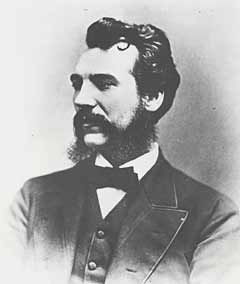
1874 - School of Oratory & Alexander Graham Bell
Alexander Graham Bell taught at the School of Oratory in 1873 - 1876, in an effort to help deaf students communicate in the areas of Vocal Physiology and Elocution. He was initially attracted to Boston because of MIT. Teaching at the Boston School for Deaf Mutes. The school would later be renamed the Horace Mann School for the Deaf and become part of the Boston Public School system. Located in the Allston section of Boston, it continues to educate students to this day.
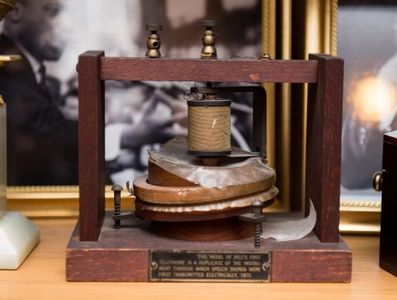
1874 - Model of first telephone
After attending a number of lectures at MIT and learning more about the "mechanics of telegraphy." Alexander Graham Bell wondered if it would be possible to make an instrument to transmit sound by vibrations, so that the deaf could “feel” subtle differences they could not see when lipreading.”
Enter Lewis Monroe, Dean of the School of Oratory, who offered Alexander a professorship teaching 5 hours in exchange for $5 per hour and use of an University room for his private pupils. He later was granted space for research and scientific projects. It was in this research space on Exeter Street that he developed what we now know as the telephone. The hope was Bell’s device would help the deaf or hard of hearing communicate.
He did not meet that lofty goal, but he was able to discover the beginnings of telecommunications.
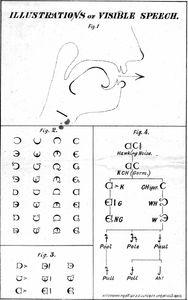
1875 - The Legacy of Melville and Alexander Graham Bell
Melville and Alexander Bell pushed to diversify the way people could choose to communicate. Many believed in the late 19th century that sign language was the only way. Melville and Alexander showed parents that more was possible, : the community of those who understood sign language was inevitably small. If a hearing-imparied child could be taught to lip-read and to speak, he or she would have a much better chance at overcoming the isolation. Parents were eager to try anything that would bring their children into the mainstream.

1881 - Sargent School of Physical Training (Sargent College)
In 1881, Dr. Dudley Allen Sargent founded the Sargent School of Physical Training in Cambridge, MA on 20 Church Street, Cambridge, MA.
During the decades that followed the establishment of the School, Dr. Sargent built a reputation as an innovator in physical conditioning and health promotion. Sargent’s work help those interested in improving, tweaking, or rehabilitating from bodily-based conditions.
At the Sargent School, students learned training techniques to strengthen and improve the physical capabilities of all people, including both disabled and healthy individuals.
Beyond the physical training, students were taught the importance of science and teaching, too.
Sargent and his school practiced true inclusion of all teaching philosophies with the motto, “Influenced by all, prejudiced towards none”

1881 - Sargent Emphasizes Education and Science to Help Train Physical Therapists and other Professionals
This emphasis on education and science remains a focus of the College today as it trains physical therapists, nutritionists, and rehabilitation specialists.
Sargent College became part of Boston University in 1929, five years after Dr. Sargent's death.
In the fall of 1990, BU Sargent College moved to an extensively renovated facility at 635 Commonwealth Avenue.
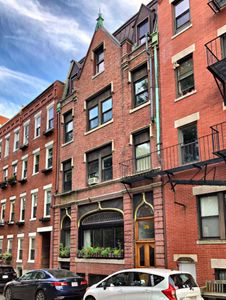
1898 - Medical Mission Dispensary at 36 Hull Street, Boston
The Medical Mission Dispensary was maintained by the Methodist Episcopal Church and Woman’s Home Missionary Society. Students from BU Medical School and the School of Theology assisted through service work.
It was the first medical mission in New England.
Patients were treated for surgeries, dental work, illnesses, prenatal and gynecological care.
You can see some of the nursing notes kept by medical staff at the Medical Mission. These date back to 1898. Many of these records are those of immigrant families that lived in the area at the time.
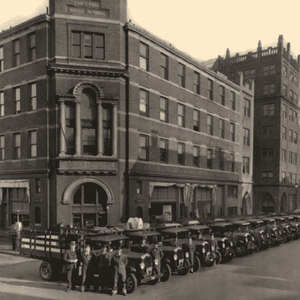
1901 - Morgan Chapel / Morgan Memorial Goodwill
STH Alum, Edgar J. Helms began work in city missions through the Methodist church as a student at the School of Theology. He went on to become the pastor at Morgan Memorial, the church that later would become the birthplace of Morgan Memorial Goodwill, an organization whose motto was “not charity but a chance” hoping to help all people in need.
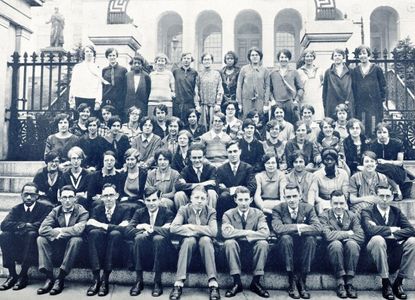
1918 - School of Religious Education and Social Service
The religious workers helping organizations like Morgan Memorial and the New England Deaconess Association required additional teaching and training to make a more profound impact on those they served in the South End. These two organizations founded the School of Religious Education and Social Service in 1918.

1920-1929 - Tower Honoring Alexander Graham Bell
BU President Lemuel Herbert Murlin worked with the architecture firm Cram Ferguson to create a center for the Charles River Campus, comprised of the current School of Theology, Marsh Chapel, and College of Arts and Sciences buildings. In 1920, the initial drawings showed a landmark administrative tower that would be built behind Marsh Chapel, honoring the research and teaching of to Alexander Graham Bell at the School of Oratory from 1874. The tower for University administration was never built as the land was taken by eminent domain to create Storrow Riverbank, the area near the Charles River directly behind Marsh Chapel, and soon after Storrow Drive.

1932 - School of Education Boston University Education Clinic
Boston University students and professors created the education clinic to help students in elementary school, with a median age of 11 years, improve their reading ability. They identified that reading disability, as they put it, presented for a variety of different reasons (vision, neurological, hearing/speech, physical disabilities, etc.) was multifactorial.
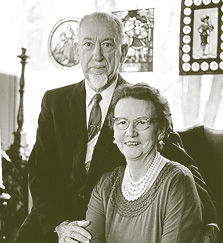
1952 - Albert V. Danielsen Institute
The Albert V. Danielsen Institute was founded in 1952 to help improve the practice of pastoral counseling.
In the early 1980s, the Danielsen Institute began to take on students to help assist them with their mental health needs.












